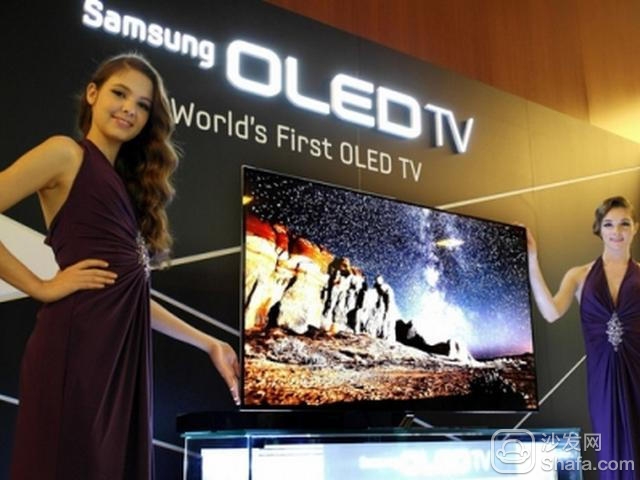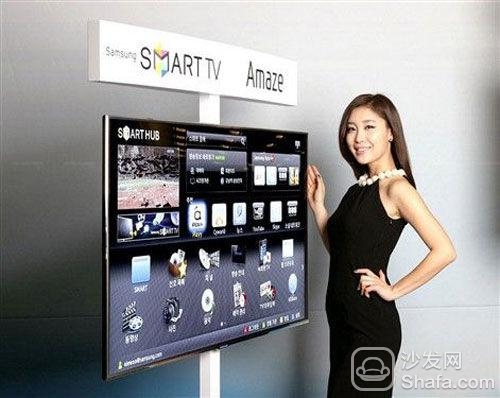Reliance on Samsung OLED public opinion Chinese TV companies will eat a stupid?
In the OLED industry is getting hot today, this view seems to have some grandstanding. However, due to Samsung's huge volume and strong influence, it will still mislead some consumers and even industry players to judge the OLED industry.
The outside world does not analyze and deal with this information from the perspective of the company's business strategy.
Some consumers may understand that the electronic products such as mobile phones, computers, and televisions that we use on a daily basis are not manufactured by a single manufacturer, but are manufactured by brand manufacturers that purchase components from upstream component manufacturers.

For example, mobile phones, although the products are affixed with Apple, Xiaomi, HTC brand, but most of the chips come from chip suppliers such as TSMC and Qualcomm. The screen is provided by screen manufacturers such as Sharp, Samsung Display, and JDI. In terms of camera devices, Sony is in a monopoly position. After the earthquake in Kumamoto, Japan, the Sony plant was suspended. As a result, some mobile phone companies were unable to ship properly.
Compared with mobile phone products, the ones that have the greatest impact on TV products are upstream screen suppliers.
In the area of ​​TV panels, according to statistics from WitsView, a research and statistics agency, in October 2015, the top five vendors shipped are Innolux, LGD, Samsung Display, BOE, and China Star Optoelectronics.
The number of screen manufacturers is much smaller than the number of TV companies we know well. Sony, which has many fans, does not have large-volume panel manufacturing capabilities.
In the field of OLED panel manufacturing, it is subdivided into large and small sizes due to technical reasons. Among them, LGD mainly produces large-size OLED panels, and Samsung produces small-sized OLED panels.

As early as in 2009, Samsung launched its first mobile phone SCH-W850 with OLED screen, and then fully promoted the OLED screen on the GALAXY series of mobile phones. It has been seven years since the introduction of the first test model to date, and it does not include the time of prior technology research and development.
In the past few years, Samsung has not been very calm. By 2014, a large number of people in the industry still doubted the excellence of the OLED mobile phone screen. Until recently, Apple’s news that the company decided to use Samsung's OLED screen, OLED was only available to the industry. Unanimously recognized.
Apple's use of OLED screens is a compromise on technology that compromises Samsung. Previously due to patent technology disputes, the US court ruled that Samsung compensated Apple with USD 548.2 million. The outside world agreed that Apple's use of OLED screens proves that the relationship between the two sides has gradually eased.
At present, the market share of Samsung small and medium sized OLED panels is as high as 90%. After the outside world is optimistic about OLED, Samsung almost has the power to control the production of high-end mobile phones. According to reports, when HTC and Samsung competed positively in 2010, Samsung strategically reduced the supply of screens to HTC, resulting in the production of HTC phones unable to meet market demand.
In the field of television, the new curved surface televisions of Xiaomi and Leshi have recently adopted curved screens supplied by Samsung. Although LeTV's curved TV was launched earlier than Xiaomi, millet's curved TV can be purchased from official channels. LeTV's curved TV is still in the bouncing. Xiaomi also said at the press conference that its surface products have been supported by Samsung.
Upstream suppliers have the ability to determine the production capacity and destiny of downstream producers' products.
After familiarizing with the above background, you may wish to take a look at the current TV industry's sales pattern and the upstream capacity pattern.

Currently, only LGD can produce large-size OLED screens for TV screen suppliers. All OLED TVs on the market use OLED screens produced by LG. Samsung does not want to push forward. Due to technical reasons, Samsung does not have the capability to mass-produce large-size OLED screens.
The OLED production technology mastered by Samsung can produce large-size OLED panels, but the yield rate is low, the cost is thus increased, and mass production competitiveness is not available.
However, this does not mean that Samsung did not study large-size OLED panel technology. At the same time, we also have reason to believe that Samsung not only did not stop R&D, and may even have accelerated R&D.
In recent years, with the continuous release of panel makers' capacity, the prices of LCD panels have continued to decline. In 2015 alone, prices of some LCD panels even dropped by as much as 50%. The screen vendors’ profit margins in the LCD panel area have been gradually reduced and competition has become increasingly fierce.
Under the background of weak LCD prices, Samsung is relying on OLED technology to be able to compete in the small- and medium-size panels. According to a data report from the market adjustment agency IHS, Samsung’s global market share of small- and medium-sized panels in 2015 increased to first, reaching 23%, which is Samsung’s first achievement.
The rise in the market share of Samsung's small size corresponds to the decline in market share of Sharp, JDI, and LGD. Samsung's years of hard work finally got a bumper harvest in 2015.
Why does the LGD market share decline? Although LGD currently has the technology to produce small and medium size OLED panels, it does not have the plant and equipment to produce small and medium sized OLED panels.
In the panel production area, the cutting line is completely different due to the different panel sizes. Therefore, even if Samsung currently controls the production technology of large-size OLED panels, it is necessary to have mass production after the completion of the factory and the production line.
In the large-size panel production area, LG's growing large-size OLED panel production capacity has played a great role in stimulating the current LCD panel manufacturers. BOE will launch a 55-inch OLED panel in the second half of this year, and Guo Taiming will also invest 200 billion yen in the OLED panel area after it acquires Sharp.
During the vacuum period in which LGD took the lead, the old rival Samsung had no choice but to sing OLED TVs at this time, just as the small-size LCD screen makers slammed Samsung in previous years.
Because OLED TV is not the biggest impact of Samsung's TV products, but Samsung's large-size LCD panel business. Samsung, which relies on small-size OLED panels to capture JDI and Sharp's business, is most clearly aware that the rise of OLED panels will have a huge impact on the entire panel industry.
At present, Korean manufacturers LGD, Samsung monitors share the size of the OLED screen market. However, other upstream screen makers are not stupid. BOE China, JDI Japan, and Sharp are stepping up their efforts to follow up on the OLED industry.
However, the strategic layout of some downstream TV manufacturers is eye-popping. On the one hand, they rely too heavily on Samsung's supply chain, and there is no way to get LGD's large-size OLED panels. On the other hand, they gullibly believe that Samsung will reject OLED technology.
After Samsung overcame the technological difficulties of large-size OLEDs, the first production capacity must be to supply its own products and compete with the old rival LG.
One premise that needs to be recognized is that the market share of Samsung and LG products in the Chinese market is not high, and the main sales focus of both products is in overseas markets. LG and Samsung are each other's main competitors in the overseas TV market.
LGD provides OLED panels for Chinese TV production companies and will not have fierce competition. The advantages outweigh the disadvantages. At the same time, the large-scale OLED panel production capacity of LGD is gradually expanding as investment increases. It is reported that a well-known domestic TV maker once injected LGD 8.5-generation panel factory in Guangzhou.
It can be said that TV companies that do not have OLED products at the moment will be embarrassed as LeTV will launch curved TVs. The smoke bomb that Samsung released "The OLED TV has no future" was sold by some manufacturers as truth. After Samsung prepared enough to switch to OLED TVs, these TV makers who refused OLED would find themselves eating a Samsung stick.
The Transformer Terminal Blocks have been widely used in the world's electrical and electronic engineering industry: large transformers, etc. The structure design of the transformer terminal takes into account the characteristics of convenient connection and firm screw connection, which can be installed on the guide rail quickly and conveniently. The product design conforms to IEC 60947-7-1 and other international standards.
Transformer terminal block, structure design feature is easy connection and reliable connection. snap foot allowing quick fixing to flat mounting rails 2X10mm. The product is designed in accordance with IEC60998,UL1059,UL486E and CSA.
Transformer Terminal Blocks
Terminal Block Price,Electrical Connector Blocks,Transformer Terminal Blocks,Current Transformer Terminal Block
Suzhou WeBest Electronics Technology Co.Ltd , https://www.webestet.com